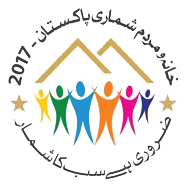2017 Census of Pakistan
| Sixth Census of Pakistan | |
|---|---|
 |
|
| General information | |
| Country | Pakistan |
| Date taken | 15 March 2017 to May 25, 2017 |
| Total population | 207,774,520 |
| Percent change |
|
| Annual percent change | 2.4% |
| Most populous province/territory | Punjab |
| Least populous province/territory | Capital Territory |
The 2017 Census of Pakistan was a detailed enumeration of the Pakistani population which began on 15 March 2017 and ended on 25 May 2017. The census was conducted by the Pakistan Bureau of Statistics for the first time in 21st century and after 19 years. Initial estimates put the population at 21–22 crore (210–220 million). Due to the dismissal of Nawaz Sharif from the office of Prime Minister, the provisional results were delayed. The provisional results were finally presented to the Council of Common Interests on August 25, 2017, and then approved and released to the public. The results showed a total population of Pakistan excluding of that of Gilgit Baltistan and Azad Kashmir at 207.8 million.
The census was conducted by 91,000 enumerators from different government sectors, of which the Pakistan Army provided security with 200,000 personnel. The census recorded a total of 9 languages out of an estimated of 80 languages spoken in the country, and officially recognized transgender as a third gender.
The census was conducted in 2 phases. The first phase lasted from 15 March 2017 to 13 April 2017 and covered 63 districts of the country. The second phase began on 25 April 2017 and lasted until 24 May 2017 covering the remaining 88 districts. However, the census in the Islamabad Capital Territory and neighbouring districts of and Rawalpindi, although included in the second phase, began on 30 March 2017 and concluded on 23 May 2017. Furthermore, for administrative purposes, census in the Kech District of Balochistan was spread over both phases.
The provisional results of the 2017 Census were presented to the Council of Common Interests on 25 August 2017. According to the results, the total population in Pakistan was 207,774,520, representing a 57% increase in 19 years. The provisional results exclude data from Gilgit-Baltistan and Azad Jammu & Kashmir, which is likely to be included in the final report in 2018. The transgender population stood at 10,418 (0.005% of the population). The urban population in Pakistan stood at 75,580,000 or 36.4% of the total population.
...
Wikipedia
